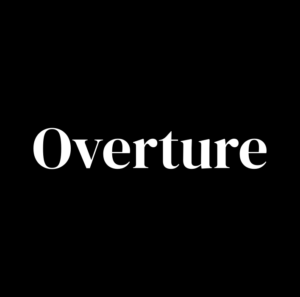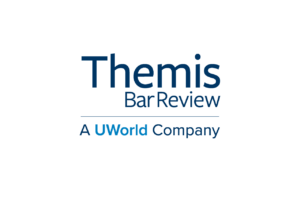The Best Law Schools For Getting A Biglaw Job (2020)
This is a great way for law students, both current and prospective, to gauge their employment prospects.
 Rankings season is upon us, and many publications are rolling out their best offerings for readers’ perusal in advance of the release of the 2021 U.S. News & World Report Law School Rankings and the latest edition of the Above the Law Top 50 Law School Rankings.
Rankings season is upon us, and many publications are rolling out their best offerings for readers’ perusal in advance of the release of the 2021 U.S. News & World Report Law School Rankings and the latest edition of the Above the Law Top 50 Law School Rankings.
For more than a decade, Law.com has published a list of the best law schools to go to if you want to work in Biglaw after graduation. Law.com refers to these institutions of higher education as the “go-to law schools,” and this year, they’re ranked by the percentage of 2019 graduates who took associate positions at the 100 largest law firms based on attorney headcount.
Before we get to the list of the go-to law schools, it’s worthwhile to speak about the landscape for entry-level employment in the legal profession. While Biglaw firms recently pulled back on the sizes of their summer classes (perhaps in preparation for the next recession), recent law school graduates were hired in the heyday of Biglaw hiring. Law.com has more info:

Trust The Process: How To Build And Manage Workflows In Law Firms
2019 was a good year to graduate from a top school if you aspired to work in Big Law. The number of 2019 juris doctors hired as new associates by the largest 100 firms ticked up slightly in 2019 to 4,423, and more than 30% of graduates from the 50 schools on our list landed those jobs.
In fact, several career services deans said the class of 2019 likely represents a high mark in large firm hiring. Those new associates went through the summer associate recruiting process in 2017, when firm recruiting was fairly robust.
That said, things are looking swell for the Go-To Law Schools. Here are the Top 10:
- Columbia Law: 69.68 percent
- Penn Law: 58.40 percent
- NYU Law: 55.51 percent
- Northwestern Law: 55.00 percent
- UVA Law: 52.61 percent
- U. Chicago Law: 50.50 percent
- Duke Law: 49.55 percent
- Berkeley Law: 49.39 percent
- Cornell Law: 48.72 percent
- Harvard Law: 47.75 percent
You can access the full list of the Top 50 Go-To Law Schools by clicking here.
Sponsored

Law Firms Now Have A Choice In Their Document Comparison Software

Trust The Process: How To Build And Manage Workflows In Law Firms

Referral Fees The Key To Growing A Modern Practice? Overture Thinks So.

Raising The Bar in Bar Prep
With almost 70 percent of its graduates heading to Biglaw firms after graduation, Columbia has ruled this ranking for the past seven years. The top five schools remain unchanged from last year’s ranking, but there was some movement in the bottom five schools. Chicago and Berkeley both moved up (three spots and two spots, respectively), while Cornell and Harvard both sank (three spots and two spots, respectively). It’s worth mentioning the fact that clerkship placements aren’t considered in this ranking, which is likely the reason why Yale barely made it into the Top 20 on this list, and why Stanford doesn’t make a Top 10 appearance.
Law.com also has a list of “Firm Favorites,” noting the law schools that specific firms recruited most heavily from. Here are some highlights from that list:
Skadden: Columbia (23)
Kirkland & Ellis: Northwestern (22)
Ropes & Gray: Boston U. (18)
Cleary Gottlieb: Harvard (17)
Latham: Georgetown (13)
Perhaps even more notable than these numbers are the tuition figures appended to this year’s rankings. While the total costs aren’t wildly different, the employment percentages are. Why pay ~$59,000 to go to a school that sends 37 percent of its graduates to Biglaw when you can spend ~$20,000 less to go to a school that sends about the same percentage of its graduates to Biglaw?
Either way you slice it, this list is incredibly useful. It’s a great way for law students, both current and prospective, to gauge their employment prospects. Use these rankings wisely — or ignore them, at your peril.
Sponsored

Raising The Bar in Bar Prep

How Savvy Lawyers Build Their Law Firm Rate Sheet
The Top 50 Go-To Law Schools (2020) [Law.com]
Want to Work in Big Law? These Schools Are Good Bets [Law.com]
Go-To Law Schools: Firm Favorites [Law.com]
Go-To Law Schools: Tuition [Law.com]
 Staci Zaretsky is a senior editor at Above the Law, where she’s worked since 2011. She’d love to hear from you, so please feel free to email her with any tips, questions, comments, or critiques. You can follow her on Twitter or connect with her on LinkedIn.
Staci Zaretsky is a senior editor at Above the Law, where she’s worked since 2011. She’d love to hear from you, so please feel free to email her with any tips, questions, comments, or critiques. You can follow her on Twitter or connect with her on LinkedIn.







